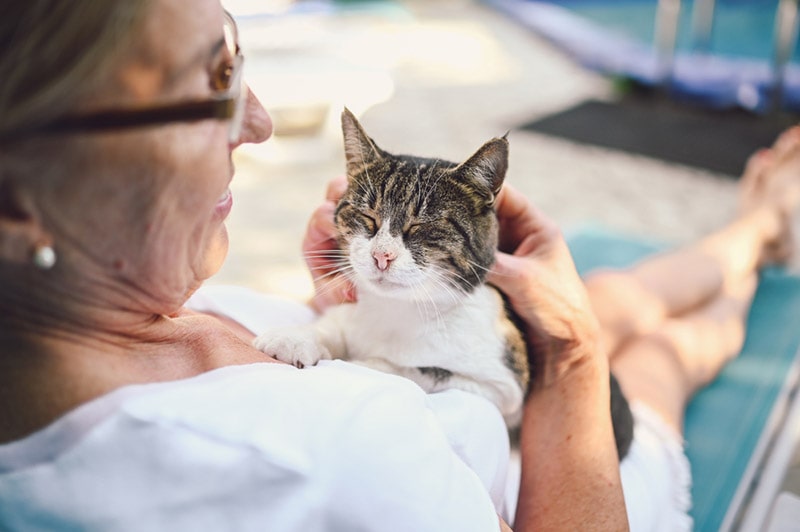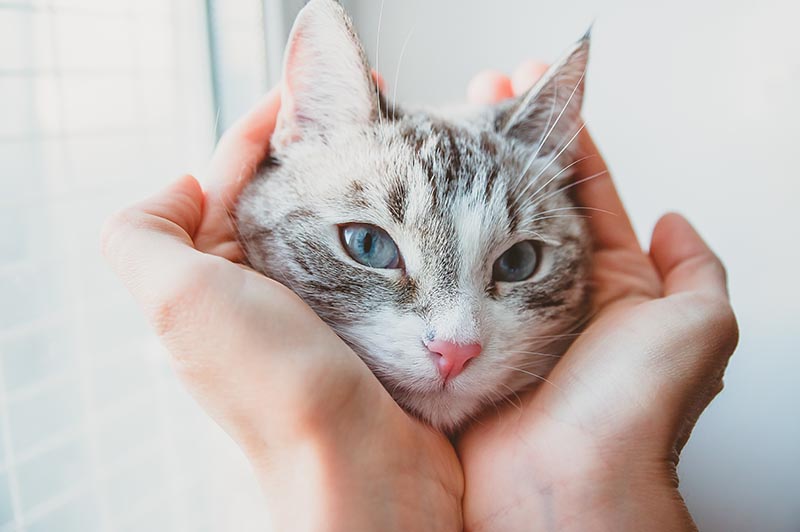How to Train a Bengal Cat: A Step-by-Step Guide
Updated on
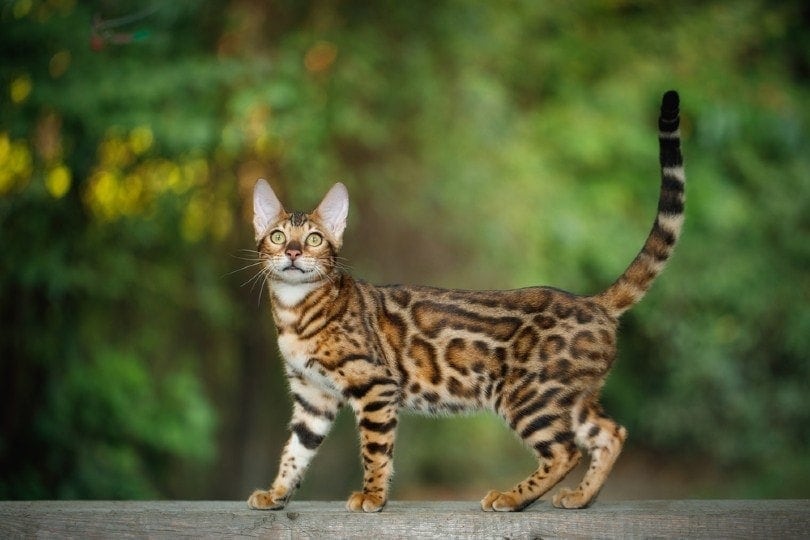
The Bengal cat is a splendid creature. Indeed, they are arguably one of the most gorgeous exotic felines that we can have the privilege of sharing a home with. This graceful, athletic, and energetic kitty also has a strong personality and amazing intelligence. Brains, beauty, and brawn: The Bengal cat seems to have it all! You can take advantage of the Bengal’s great learning ability by training them. Here’s a step-by-step guide to help you teach your mini leopard a few tricks in no time!
Before You Start: What You Need to Know About Training a Bengal Cat
For starters, determine what you would like your Bengal cat to learn. Consider the commands that you want to use and the types of behaviors that you want them to learn.
- Training to use the litterbox
- Coming to you when you call their name
- Staying still when you groom them
- Not scratching or biting furniture
- Playing fetch
- Remaining calm in their transport cage (for example, during trips to the vet)
There are many motivations for wanting to train your Bengal cat. Teaching them to behave in certain ways will help your cat become sociable around their family and other pets in your household. Training is also important for your own well-being: If your cat can be calm during brushing, nail trimming, or being transported to the vet, you will experience less anxiety. So, the better educated and behaved your cat is, the better your relationship will be.
- Keep training sessions short, or you will risk losing your Bengal’s attention.
- Focus on one type of training at a time until your cat has mastered the new trick.
- Ideally, schedule training sessions before your pet’s meals. Otherwise, your kitty may find the treat less appealing, and they will have little motivation to do what you expect of them.
- Start training your Bengal cat from an early age; they will be more receptive and willing to learn fun new tricks!
Now that you have the basics in mind, you can start training your smart feline!
5 Behaviors to Train Your Bengal Cat
1. Sitting
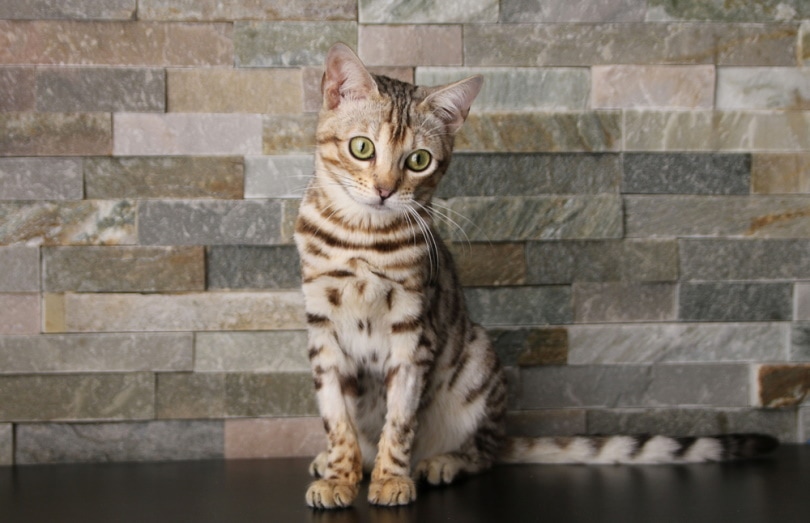
Just like with dogs, you can teach your Bengal cat to sit. It’s a simple trick and relatively easy to learn:
- Hold a treat in front of their head.
- Slowly move the treat behind their ears. Your cat should follow the treat with their eyes, raise their head, and naturally lower their butt.
- Once your cat is sitting, praise them warmly and give them a treat.
Side note: Give your kitty a treat even if they don’t sit up completely the first few times. Through repetition, your clever Bengal will understand what you expect of them.
2. Standing Up
Once your Bengal has mastered the sitting position, you can move on to training them to stand up on command. Start by telling your cat to sit. After that, move a treat above them, high enough that they have to reach it with their paws. Once they reach it, praise them warmly and give them their well-deserved treat.
3. Teach Your Cat to Come When Called (Recall)

Do this exercise before feeding your feline companion because then you will have their full attention! Get your cat’s attention by calling their name while tapping on their favorite food bowl. When they come near you, give them a treat and praise them.
Little by little, try to bring your cat closer to you by calling them by their name while moving farther away from them.
4. Shake Hands
Start by sitting facing your cat and then gently touching its paw. When they lift their paw, take it in your hand as if shaking hands with a human and give them a treat.
5. Teach Your Bengal to High-Five
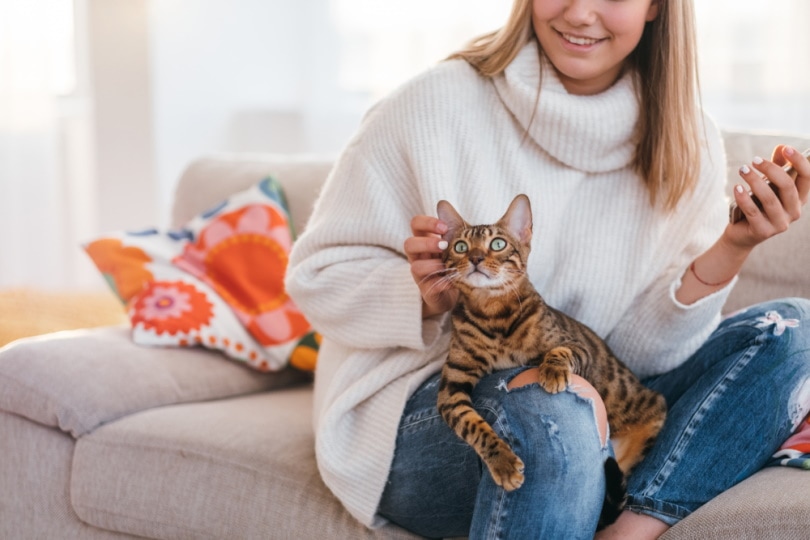
There’s nothing cooler than a Bengal that knows how to give a high-five! To teach this trick, give your cat a treat each time they lift a paw. Next, place a treat in your hand in front of them, close your hand, and wait for your Bengal to raise their paw to try to grab it. When they do this, offer them the treat. Repeat this action a few times, gradually raising your hand a little higher until the motion resembles a high-five.
How to Encourage Your Bengal Cat to Learn New Tricks
Like all other domestic felines, Bengal cats need to know boundaries and be rewarded for sticking to them, and your Bengal kitten should be educated as soon as possible. Also, as with all cats, it’s better to motivate them with positive reinforcement than to punish them.
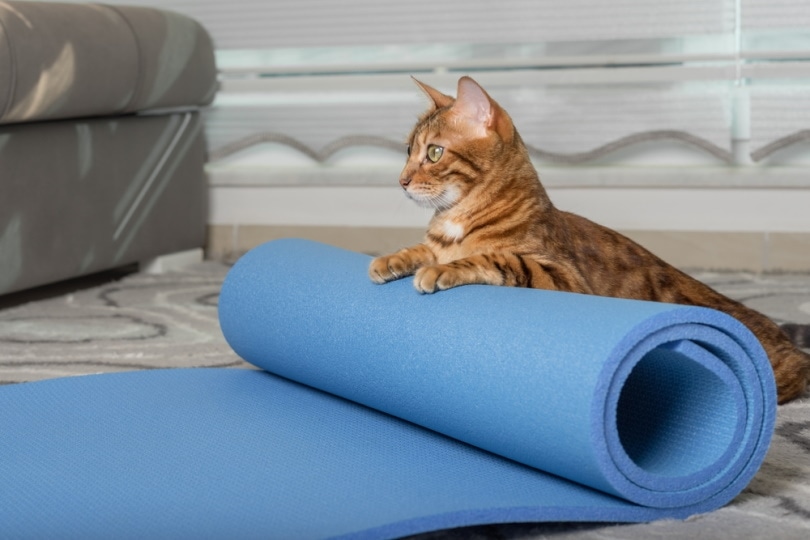
How to Reward Your Cat
Whether you want to teach your cat to give a handshake, sit, play dead, or sand up, the most appreciated rewards are typically treats. Over time, your cat will associate your commands with the treats. However, don’t forget to adapt your cat’s meals according to the food rewards that you give them.
You can also reward your Bengal with praise and petting or train them with a clicker to limit the number of extra calories that they ingest each day.
How to Clicker Train Your Cat
Using a clicker to train your Bengal cat has a few advantages over traditional treats. For example, this type of training is less expensive and less damaging to your pet’s waistline!
- Associate the sound of the clicker with something positive. Get your cat’s attention by calling their name, then press the clicker and reward your pet with a treat.
- Each time your cat does the desired behavior, press the clicker.
- Be sure to click only once when your cat displays the correct behavior. Too many clicks can confuse your cat.
- Over time, reduce the number of treats used until the clicking sound is enough to reward your cat.
- You still need to give a random treat after a click every once in a while. This helps to keep the value of the clicker sound for your Bengal cat.
Should You Punish Your Cat?

In some cases (for example, if you catch your cat defecating on the carpet), it may be necessary to “punish” them. There is, however, an important rule to respect: You must give a punishment at the precise moment that your kitty does a bad action. A cat will not understand what they are being scolded for if you intervene long after their misdeed.
Using any sort of physical punishment is entirely unnecessary. Indeed, the latter must never associate this type of punishment with you because they will become afraid of you and lose trust in you. However, you can spray them with water when they do something bad or clap your hands to scare them away. Finally, the punishment must be consistent: If you forbid them to do something one day, you must forbid them all other days.
In any case, keep in mind that patience and gentleness are essential. A quality relationship with your precious feline will yield the best results and strengthen your bond.
Conclusion
Training a Bengal cat can be easy if you apply the proper techniques, respect your pet’s learning pace, and show patience. It’s also a great way to stimulate their mind and body, while giving you wonderful moments of bonding.
However, keep in mind that despite the Bengal’s intelligence, each cat is unique and has their own character and personality. Therefore, your training may be faster or slower, depending on the learning speed of your cat. So, be patient and enjoy these precious moments with your magnificent Bengal!
Featured Image Credit: Seregraff, Shutterstock



